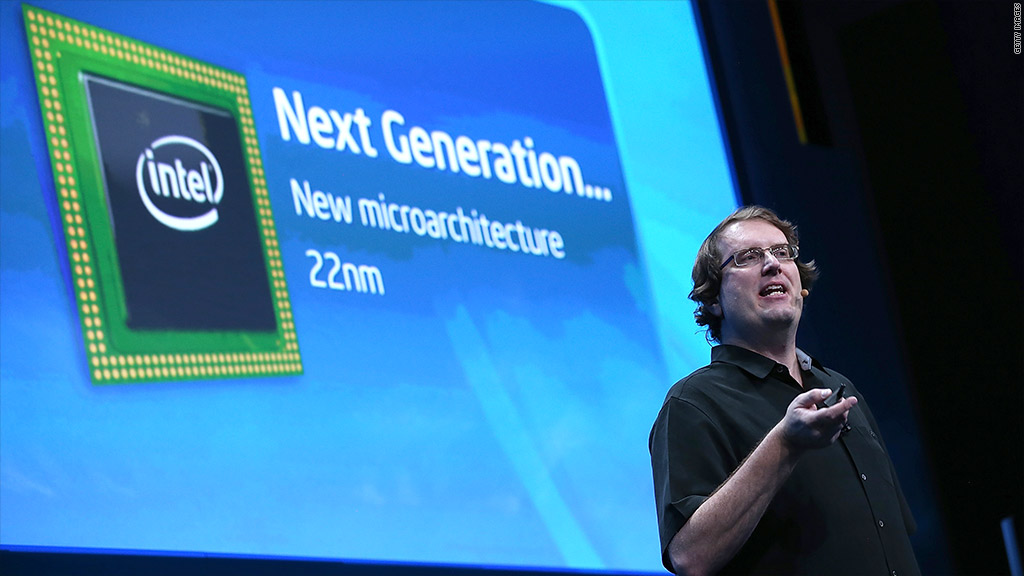
Intel may be the largest chipmaker in the world, but when it comes to mobile devices, it barely has a foot in the door.
Chip production in mobile -- the tech industry's fastest-growing computing segment -- is instead dominated by a little-known British company called ARM (ARMH). Though hardly a household name like Intel, ARM's microchip designs can be found in 95% of the world's smartphones and tablets. ARM chips are in all the most popular mobile devices, including Apple's (AAPL) iPhone and iPad, as well as the Samsung Galaxy phones and tablets.
Yet Intel (INTC) believes it has a winning strategy to become the leader in mobile: Build the best chips.
When benchmarked -- a kind of microchip speed test -- against the top-of-the-line ARM chips, Intel says its mobile processors win hands down.
Intel says it's able to outperform the competition with a combination of smart design and a soup-to-nuts chipmaking process. The company's manufacturing prowess helps bring new technologies to market faster, and Intel engineers build the company's mobile processors virtually every step of the way.
ARM, on the other hand, only designs the chip core. It licenses those designs to dozens of partners, including big names like Qualcomm (QCOM), Samsung, Texas Instruments (TXN) and Nvidia (NVDA), as well as a whole load of of chipmakers you've never heard of. After those companies build the system on a chip, they send the blueprints off to a manufacturing company for construction.
Related story: Intel's secret phone
Mike Bell, Intel's mobile chief, says his company has the software and systems competence to be the most successful.
"To be successful in this industry, simply building chips is insufficient," said Bell. "We can write software that helps us get the most out of our hardware."
As a result, even though Intel's mobile chips don't yet have multiple cores (the best-in-class ARM chips have as many as four cores), the speed tests aren't even that close.
"It's a question of whether you'd rather have a jet engine or two propellers," said Bell.
Bell said that when mobile chip designs start getting smaller and smaller -- more than halving their current size down to 14 nanometers -- it's going to be difficult for many less-experienced companies using ARM's platform to manufacture something like that.
Related story: IPad chip designer ARM wants to crush Intel
Specs aren't the only factor in chip performance, however. The chips in the iPhone, for instance, aren't the industry's best, but they typically outperform the best Android devices, because Apple builds the software and hardware to work together. Intel's chips are designed for Google's (GOOG) Android platform, which runs on literally hundreds of devices.
Bell, who came to Intel from Apple two years ago, says that's something Intel is working on as well.
"We have a great relationship with Google," said Bell. "We can do as good a job optimizing our systems as anyone, and Google has never told us 'no' when we have said we'd like to improve performance somewhere."
A year ago, Intel chips began popping up in smartphones for the first time. The chip architecture has gained some limited traction, but it hasn't been a barn burner. Its mobile chips still have virtually no U.S. presence.
Intel believes that will change with the release of its new 22 nm mobile chip design this fall, which will incorporate 4G-LTE capabilities. The company expects to announce a tablet partner in the fall and a phone in early 2014.
Meanwhile, it has a steep hill to climb.

